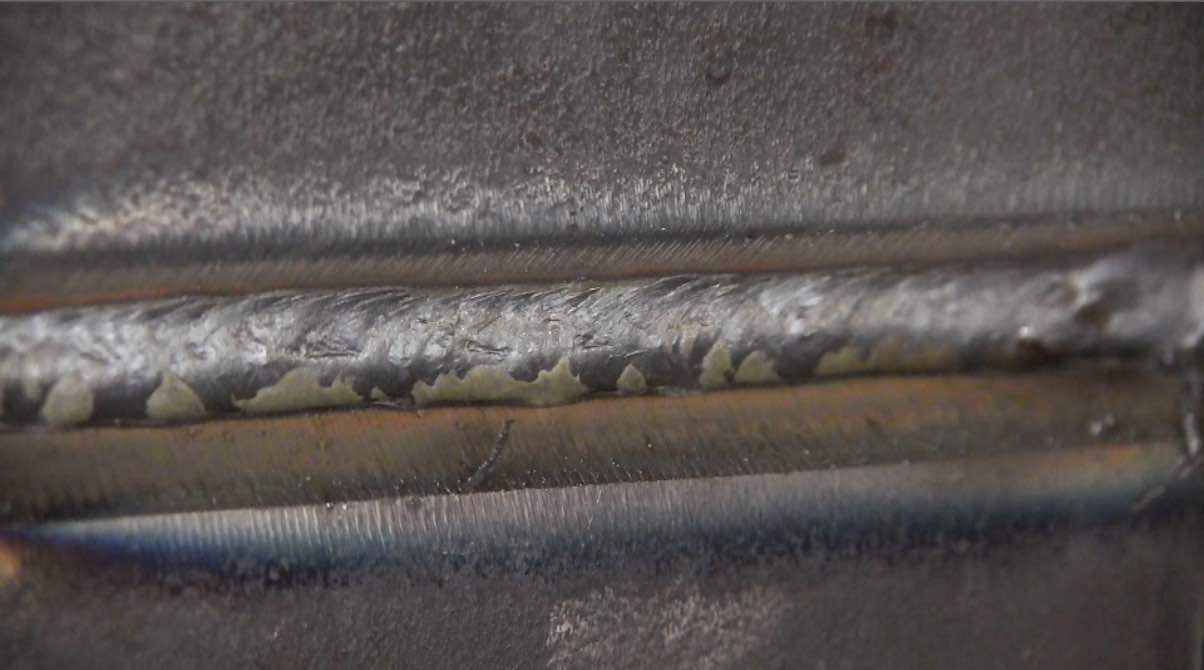Mig Welding using Co2 gas and a Lincoln Power Mig 210mp
Textbooks will tell you that Mig Welding using straight Co2 gas causes a lot more spatter than welding using 75/25 argon/co2 mix.
What textbooks dont explain is that once you dial in the sweet spot settings, a Co2 mig arc can be awfully smooth and usually penetrates better at the same wire speed setting as 75/25 ar/co2 mix.
Especially when using an inverter welder that has an inductance setting feature.
Welding too cold
I am welding 3/8" (9mm) plate using settings that are recommended for 14 ga steel. Way too cold ...except for the open butt root pass that is.
Doing this to demonstrate why you need to weld up in the high range of short circuit transfer when welding thick metal.
I picked the setting of 18 volts and 230 ipm wire speed because that was about right for the root pass using 75/25 gas....and then I just left the setting along.
Normally, for this joint, with 75/25 gas I would increase both voltage and wire speed quite a bit for the fill passes. like probably up around 21 or 22 volts
...and maybe as high as 450 ipm using .030" (.8mm) wire depending on the machine used.
And using co2 gas, I would increase wire speed the same but add another volt or 2. ( Co2 gas generally requires more voltage for given wire speed).
But just to see exactly how low I could go and still pass a bend test, I welded both plates out using the same low settings I used for the open butt root pass.
below is the root pass using 75/25 argon/co2 18 volts 230 ipm .030" (.8mm) wire
see more mig welding videos
or visit the store at weldmonger.com

The brown stuff is silicon. ER70s6 wire has a high silicon content that is designed to scavenge impurities from the puddle and float them to the surface in the form of these little brown deposits.
they should be removed before welding the next pass. usually just scraping a chipping hammer over the weld removes them once the plate is cooled..., or a power brush does a good job too.
below is the root pass welded with pure Co2 gas at 19 volts and 230 ipm

Mig welds done using co2 gas have a slightly different appearance than welds done with 75/25 mix.
Lack of Fusion and cold lap using Short Circuit Mig
"Lack of fusion" and "cold lap" are pretty much used to describe the same thing...
Basically ...The weld did not adequately melt into the base metal or previous bead.
On a bend test, you might get away with it on a face bend or root bend ...it just depends on where the lack of fusion is located.
But a side bend test will reveal it big time.
tips for mig welding using straight co2
- More Voltage for a given wire speed. I used 230 ipm and need 19 volts with co2 but only 18 with 75/25 mix.
- a good ground is more important than ever...a momentary loss of ground when welding with straight co2 gas seems to cause more problems than with mix gas...or maybe its just me.
- finding the sweet spot setting is a bit harder than with 75/25 but once you find it, its pretty darn smooth
- Co2 works better with an inverter welder with inductance set pretty high ( my lincoln power mig 210mp was set to 8 on a 1-10 scale)













